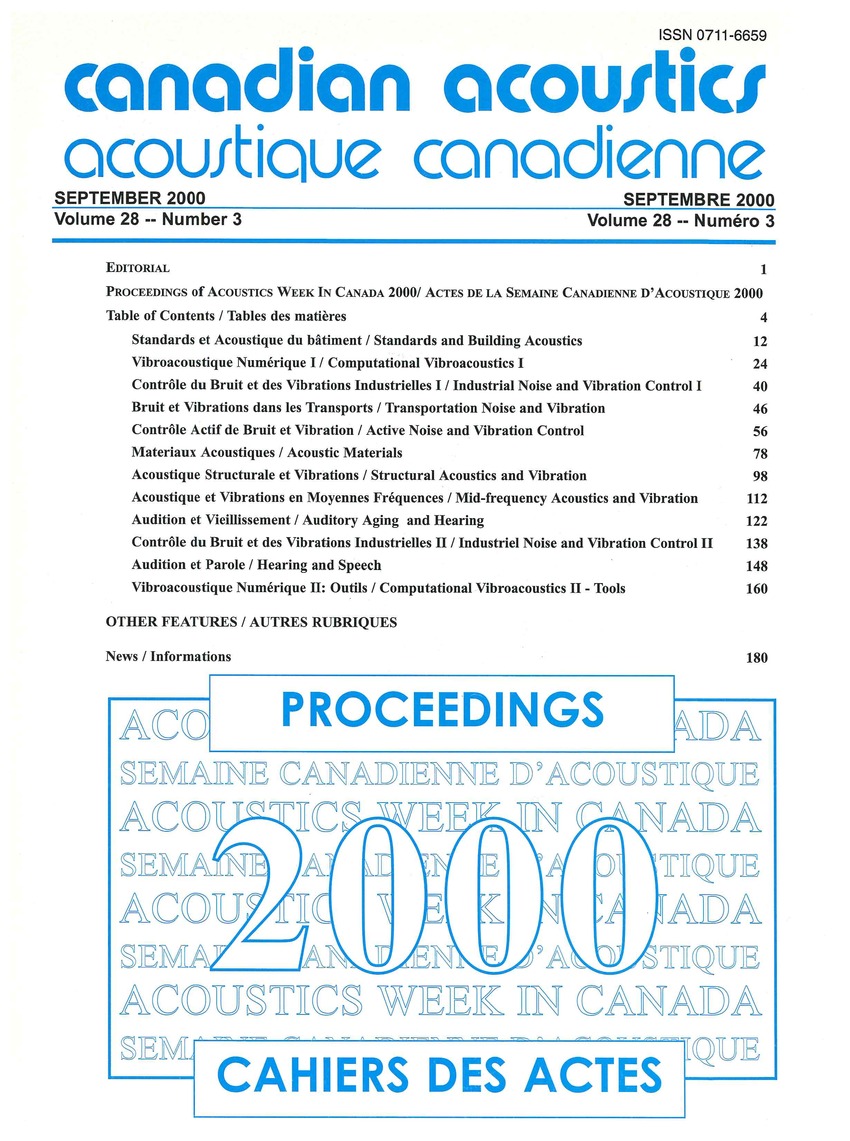Modelling of outer hair cell damage and implications for hearing aid signal processing
Mots-clés :
Acoustic signal processing, Audition, Computer simulation, Mathematical models, Vibrations (mechanical), Basilar membrane (BM), Outer hair cell (OHC), Sensorineural hearing lossRésumé
Outer hair cell (OHC) damage is the cause of auditory disabilities. OHC loss leads to a basalward shift of the place of maximum vibration; a decreased gain near the characteristic place; a broadening of the tuning curves; an altered summation of activity across frequency components, and an altered temporal waveform. Hearing aids can compensate for the general loss of sensitivity and reduced dynamic range, but they cannot compensate completely for the reduced frequency selectivity associated with OHC damage. Basilar membrane (BM) vibration cannot be completely restored for pure tones, complex tones, vowels and for sounds where the BM excitation pattern is dominated by narrow band energy.Fichiers supplémentaires
Publié-e
Comment citer
Numéro
Rubrique
Licence
Author Licensing Addendum
This Licensing Addendum ("Addendum") is entered into between the undersigned Author(s) and Canadian Acoustics journal published by the Canadian Acoustical Association (hereinafter referred to as the "Publisher"). The Author(s) and the Publisher agree as follows:
-
Retained Rights: The Author(s) retain(s) the following rights:
- The right to reproduce, distribute, and publicly display the Work on the Author's personal website or the website of the Author's institution.
- The right to use the Work in the Author's teaching activities and presentations.
- The right to include the Work in a compilation for the Author's personal use, not for sale.
-
Grant of License: The Author(s) grant(s) to the Publisher a worldwide exclusive license to publish, reproduce, distribute, and display the Work in Canadian Acoustics and any other formats and media deemed appropriate by the Publisher.
-
Attribution: The Publisher agrees to include proper attribution to the Author(s) in all publications and reproductions of the Work.
-
No Conflict: This Addendum is intended to be in harmony with, and not in conflict with, the terms and conditions of the original agreement entered into between the Author(s) and the Publisher.
-
Copyright Clause: Copyright on articles is held by the Author(s). The corresponding Author has the right to grant on behalf of all Authors and does grant on behalf of all Authors, a worldwide exclusive license to the Publisher and its licensees in perpetuity, in all forms, formats, and media (whether known now or created in the future), including but not limited to the rights to publish, reproduce, distribute, display, store, translate, create adaptations, reprints, include within collections, and create summaries, extracts, and/or abstracts of the Contribution.


